
Jalousie Beach: A Tropical Paradise in Saint Lucia
Discover the serene beauty of Jalousie Beach in Saint Lucia, a tropical haven nestled between the iconic Pitons with crystal-clear waters and vibrant marine life.
Nestled between the iconic Pitons, Jalousie Beach is a pristine stretch of white sand that promises an unforgettable tropical getaway. This stunning beach is part of the luxurious Sugar Beach, a Viceroy Resort, and offers breathtaking views of the surrounding lush greenery and crystal-clear waters. Whether you want to lounge under the sun, snorkel in vibrant coral reefs, or simply take in the majestic scenery, Jalousie Beach has something for everyone. The calm, turquoise waters of Jalousie Beach are perfect for swimming and snorkeling. The marine life is abundant, with colorful fish and coral formations waiting to be explored just a short swim from the shore. For those who prefer to stay dry, the beach offers plenty of shaded areas and comfortable loungers where you can relax and enjoy the serene environment. Jalousie Beach is also a gateway to adventure. The nearby Gros Piton and Petit Piton mountains offer challenging hikes with rewarding panoramic views. After a day of exploration, visitors can indulge in delicious local cuisine at the beachside restaurants, featuring fresh seafood and tropical flavors that capture the essence of Saint Lucia.
Local tips in Jalousie Beach
- Arrive early to secure a good spot on the beach, especially during peak tourist season.
- Bring your own snorkeling gear for the best experience exploring the coral reefs.
- Wear reef-safe sunscreen to protect the delicate marine ecosystem.
- Consider hiking the Pitons for a stunning view of the island, but be prepared for a strenuous climb.
- Try local dishes at the beachside restaurants for an authentic taste of Saint Lucian cuisine.
Jalousie Beach: A Tropical Paradise in Saint Lucia
Nestled between the iconic Pitons, Jalousie Beach is a pristine stretch of white sand that promises an unforgettable tropical getaway. This stunning beach is part of the luxurious Sugar Beach, a Viceroy Resort, and offers breathtaking views of the surrounding lush greenery and crystal-clear waters. Whether you want to lounge under the sun, snorkel in vibrant coral reefs, or simply take in the majestic scenery, Jalousie Beach has something for everyone. The calm, turquoise waters of Jalousie Beach are perfect for swimming and snorkeling. The marine life is abundant, with colorful fish and coral formations waiting to be explored just a short swim from the shore. For those who prefer to stay dry, the beach offers plenty of shaded areas and comfortable loungers where you can relax and enjoy the serene environment. Jalousie Beach is also a gateway to adventure. The nearby Gros Piton and Petit Piton mountains offer challenging hikes with rewarding panoramic views. After a day of exploration, visitors can indulge in delicious local cuisine at the beachside restaurants, featuring fresh seafood and tropical flavors that capture the essence of Saint Lucia.
When is the best time to go to Jalousie Beach?
Iconic landmarks you can’t miss
Soufrière Drive In Volcano
Discover the geothermal marvels of Soufrière Drive In Volcano, a must-visit attraction in St. Lucia, offering bubbling mud pools and soothing hot springs.
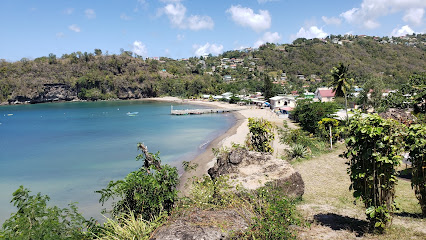
Sugar Beach, a Viceroy Resort
Experience the ultimate luxury at Sugar Beach, a Viceroy Resort, where stunning views of the Pitons meet world-class amenities for an unforgettable Caribbean escape.

Diamond Falls Botanical Gardens & Mineral Baths
Explore the breathtaking Diamond Falls Botanical Gardens & Mineral Baths, a tropical paradise filled with vibrant plants, soothing mineral baths, and stunning landscapes in St. Lucia.
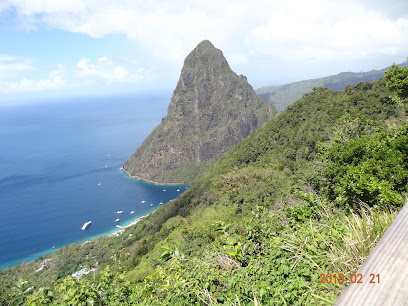
St Lucia Sulphur Springs
Experience the natural geothermal wonders of St. Lucia Sulphur Springs – a serene escape into mineral-rich mud baths and stunning volcanic landscapes.
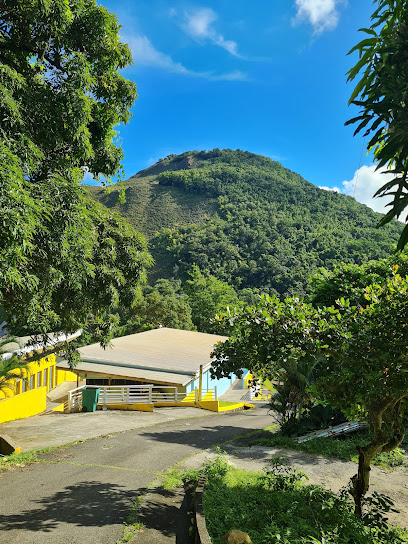
Tet Paul Nature Trail
Experience the breathtaking vistas and rich biodiversity of Tet Paul Nature Trail, a must-visit attraction in St. Lucia.
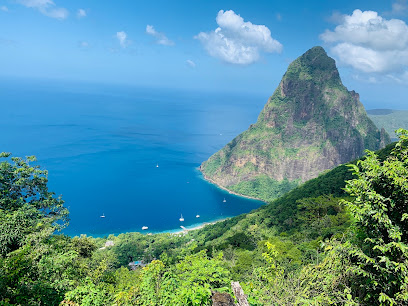
Morne Coubaril Historical Adventure Park
Explore the rich heritage and thrilling adventures at Morne Coubaril Historical Adventure Park, a must-visit destination in St. Lucia.
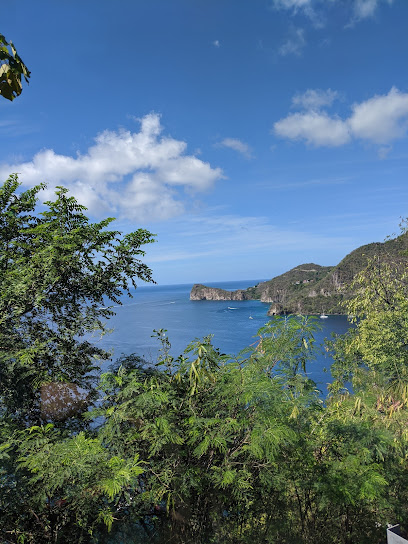
Piton Falls
Explore the breathtaking beauty of Piton Falls, a must-visit natural attraction in St. Lucia, surrounded by lush landscapes and stunning waterfalls.
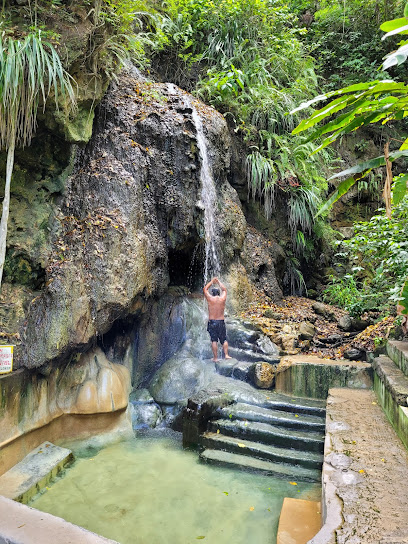
Gros Piton Nature Trail
Experience the stunning beauty of St. Lucia through the Gros Piton Nature Trail, a premier hiking destination offering breathtaking views and rich biodiversity.
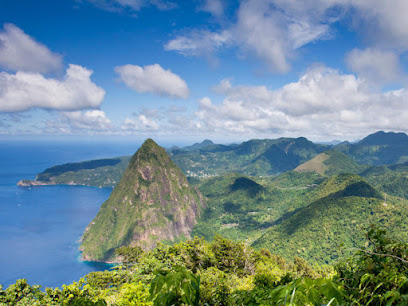
Rudy John Beach Park
Discover the tranquil beauty of Rudy John Beach Park in St. Lucia, a perfect destination for swimming, snorkeling, and relaxation amidst stunning coastal scenery.
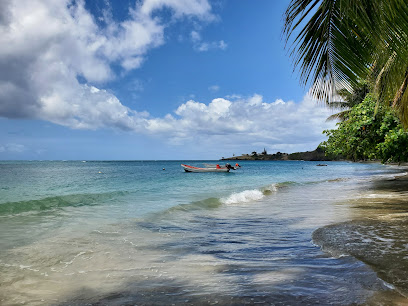
Fort Rodney
Discover the rich history and breathtaking views of Fort Rodney, a captivating landmark on Pigeon Island in St. Lucia, perfect for history enthusiasts and nature lovers.
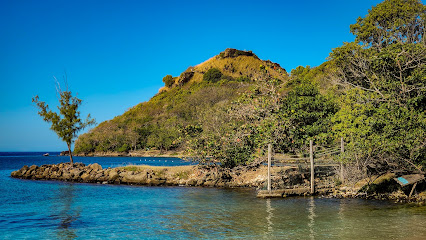
LaTille Falls and Garden
Explore LaTille Falls and Garden, a stunning botanical paradise in St. Lucia, featuring breathtaking waterfalls, vibrant flora, and serene landscapes.

Anse Mamin Beach
Experience the tranquil beauty and adventure of Anse Mamin Beach in St. Lucia, a true Caribbean paradise for relaxation and exploration.
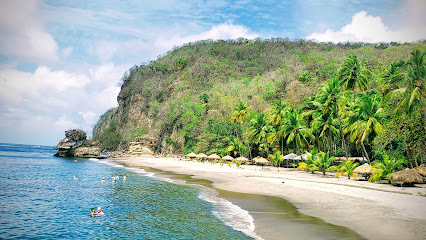
Castries City View Point
Experience breathtaking panoramic views of Castries and the Caribbean Sea at the stunning Castries City View Point in Saint Lucia.
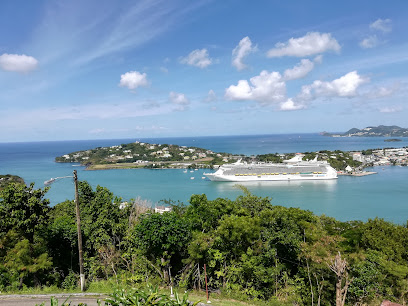
Constitution Park
Experience the tranquil beauty of Constitution Park in Castries, St. Lucia, a serene escape filled with lush greenery and rich cultural heritage.
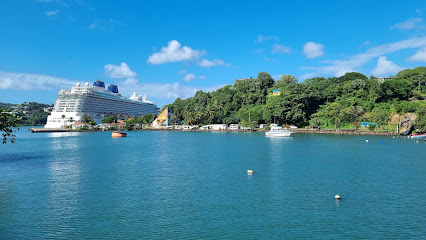
Moule-à-Chique
Discover the breathtaking beauty of Moule-à-Chique, a scenic spot in Vieux Fort, Saint Lucia, where stunning views and vibrant culture await.
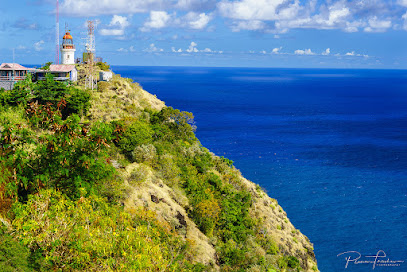
Unmissable attractions to see
Bon Nouvel
Discover the serene beauty and vibrant birdlife of Bon Nouvel, the ultimate birdwatching destination in Fond Doux, St. Lucia.
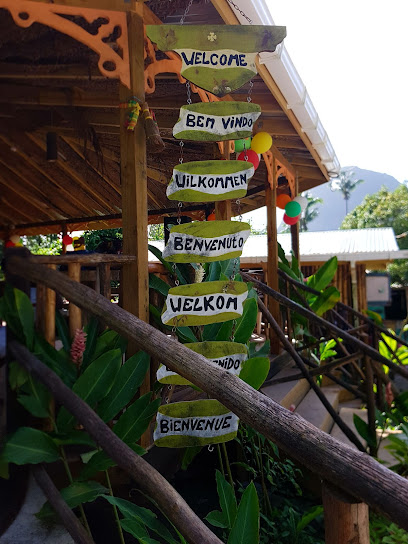
Darban 3 Waterfalls
Explore the breathtaking Darban 3 Waterfalls in St. Lucia, a hidden paradise for nature lovers and adventure seekers amidst lush tropical landscapes.
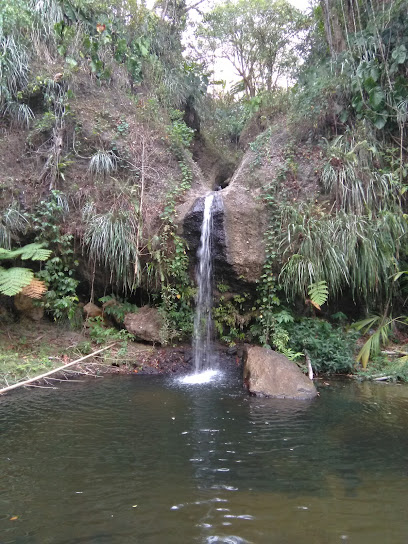
Essential places to dine
The Beacon Restaurant
Discover exquisite local cuisine and breathtaking views at The Beacon Restaurant in St. Lucia's scenic West Coast.
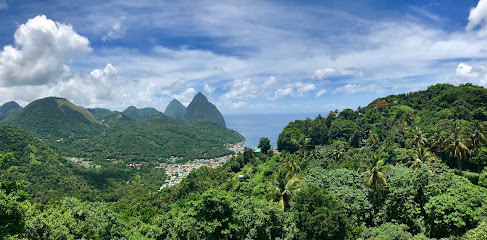
Orlando's Restaurant & Bar
Experience authentic Creole flavors at Orlando's Restaurant & Bar in Soufriere, St. Lucia—where local culture meets culinary excellence.
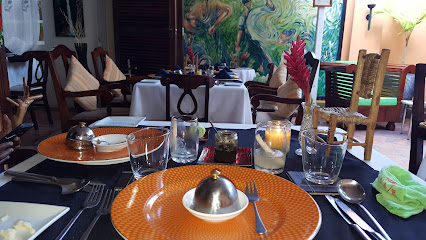
Petit Peak Restaurant
Discover delightful Caribbean flavors at Petit Peak Restaurant in St. Lucia - where breathtaking views meet exceptional dining experiences.

Island Chef
Experience authentic Caribbean flavors at Island Chef in Palmiste, St. Lucia – where every dish tells a story of island life.
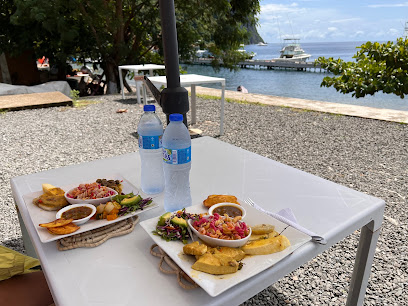
The Mango Tree
Experience authentic Caribbean flavors amidst breathtaking views at The Mango Tree Restaurant in Soufriere, St. Lucia.
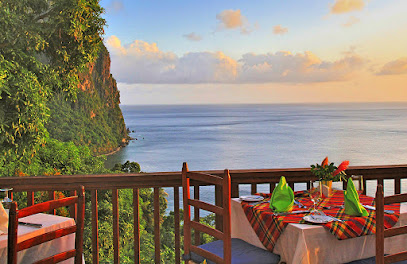
Treetop Restaurant and Bar
Experience exquisite Caribbean cuisine amidst breathtaking views at Treetop Restaurant and Bar in St. Lucia.
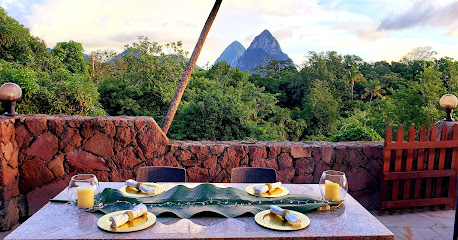
Martha's Tables
Discover authentic Caribbean flavors at Martha's Tables in Belle Vue, St. Lucia - where every meal tells a story.
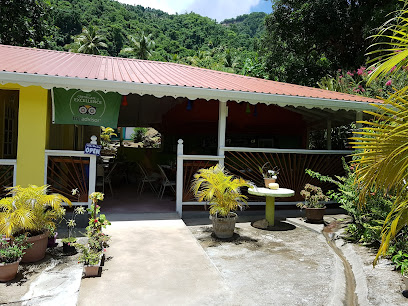
Seashell Beach Restaurant
Discover flavorful Caribbean cuisine at Seashell Beach Restaurant while enjoying stunning ocean views on Hummingbird Beach in St. Lucia.
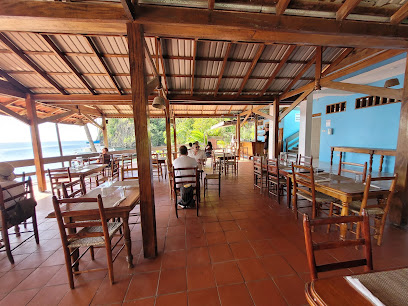
Club Whispers | Restaurant & Bar
Discover culinary delights at Club Whispers - where authentic St. Lucian flavors meet vibrant island vibes in Palmiste.
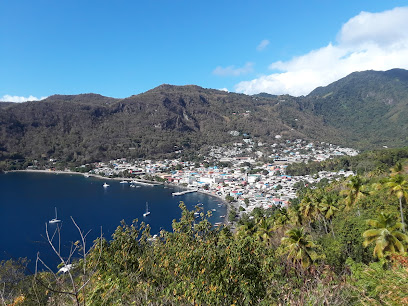
Sea View Creole Restaurant
Experience authentic Caribbean flavors at Sea View Creole Restaurant in Palmiste, St. Lucia – where every dish tells a story.

Bamboo Restaurant
Discover the flavors of St. Lucia at Bamboo Restaurant—an enchanting dining experience amidst lush landscapes and vibrant culture.
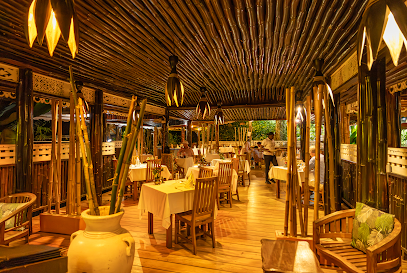
The View
Experience authentic St. Lucian cuisine with breathtaking views at The View in Anse Ivrogne.
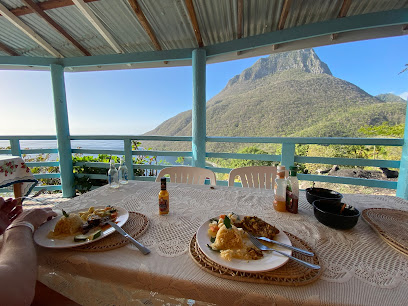
Anse Chastanet Restaurant
Experience exquisite local cuisine with breathtaking views at Anse Chastanet Restaurant in St. Lucia.
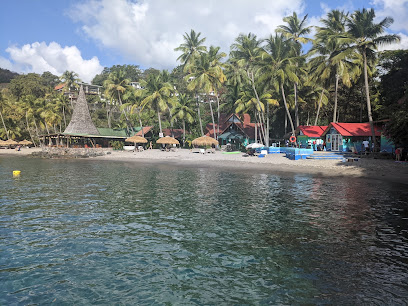
Soley Kouche Restaurant
Experience authentic St. Lucian cuisine at Soley Kouche Restaurant amidst breathtaking landscapes and vibrant culture.
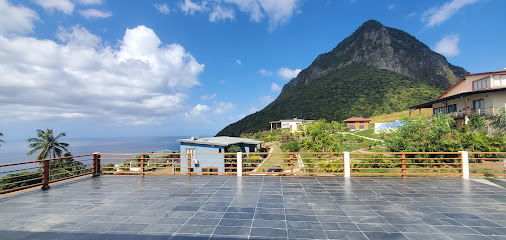
Rabot Restaurant
Experience exquisite Caribbean flavors amidst stunning landscapes at Rabot Restaurant in St. Lucia - perfect for families and food lovers alike.
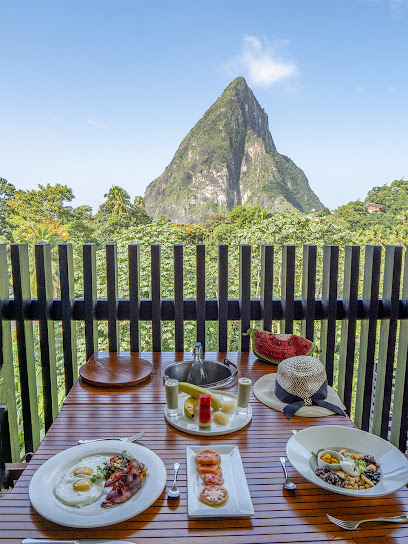
Markets, malls and hidden boutiques
Zaka's Art Café
Discover the charming Zaka's Art Café in Hummingbird Beach Park, St. Lucia - where art, culture, and delightful treats come together.
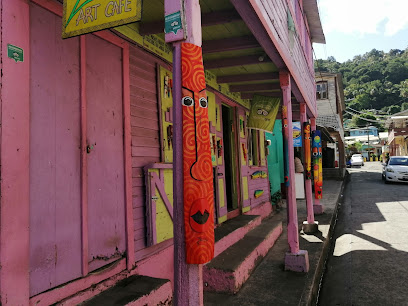
Saltwater Tackle and Supplies
Explore the vibrant fishing culture of St. Lucia at Saltwater Tackle and Supplies, your go-to for all hunting and fishing needs.

Tobi's Shop
Explore local flavors and fresh produce at Tobi's Shop, the heart of grocery shopping in Union Vale, St. Lucia.
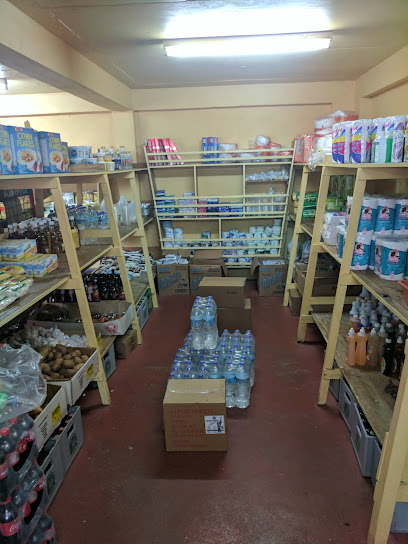
Courts | Soufrière
Explore Courts in Soufrière for a unique shopping experience, featuring a wide variety of home goods and local craftsmanship in beautiful St. Lucia.
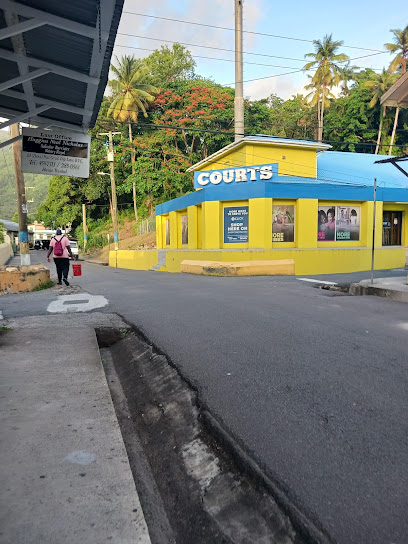
Shop D' Caribbean
Discover the vibrant local crafts and unique souvenirs at Shop D' Caribbean in La Fargue, St. Lucia – a true gem for travelers seeking authentic Caribbean culture.
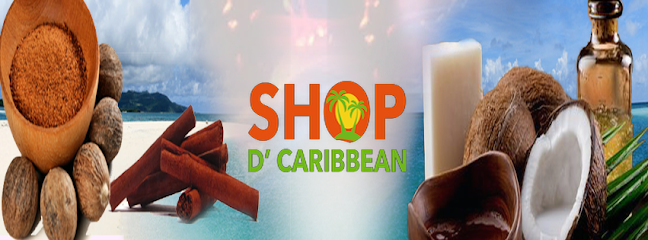
Cost U Less Boutique
Discover unique fashion and local treasures at Cost U Less Boutique, a vibrant clothing store in Vieux Fort, St. Lucia.

Unique Graphics
Explore Unique Graphics in St. Lucia for custom signage that reflects the island's vibrant culture and artistry.

The People's Shop/ Brian's Bakery
Discover the charm of local shopping at The People's Shop in Canaries, St. Lucia, where fresh goods and baked treats await.
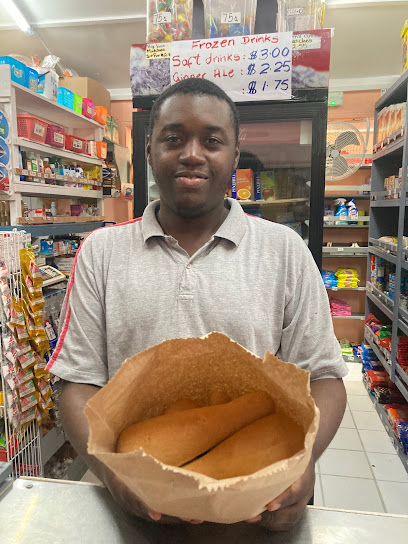
Island Memoires
Discover the essence of St. Lucia at Island Memoires, a delightful guest house and clothing store in Palmiste, offering a unique blend of comfort and local culture.

Sharon's shop
Experience the authentic taste of St. Lucia at Sharon's Shop, a family-friendly grocery store offering local produce and unique island flavors.

Victorian Boutique
Explore the vibrant shopping scene at Victorian Boutique, where local charm meets international fashion in the heart of St. Lucia.

Cristabel's Hideaway
Experience the essence of St. Lucia at Cristabel's Hideaway, where local flavors and friendly service come together in a charming grocery store.

Taytave's Boutik
Explore Taytave's Boutik for unique gifts and local crafts that embody the spirit of St. Lucia, perfect for every traveler.
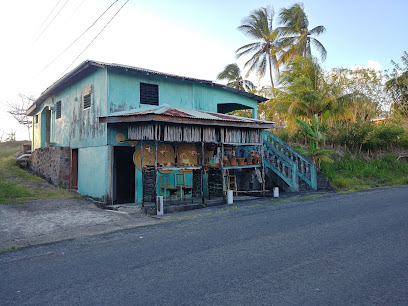
Dahlia’s Fashion
Explore the vibrant clothing styles at Dahlia’s Fashion, a unique boutique reflecting the spirit and culture of St. Lucia.

Soufriere Farmers Market
Discover the vibrant flavors and local culture at the Soufriere Farmers Market in St. Lucia, where fresh produce and community spirit thrive.

Essential bars & hidden hideouts
Cool Joint
Discover Cool Joint in St. Lucia for a delightful blend of local flavors and international cuisine in a vibrant, welcoming atmosphere.
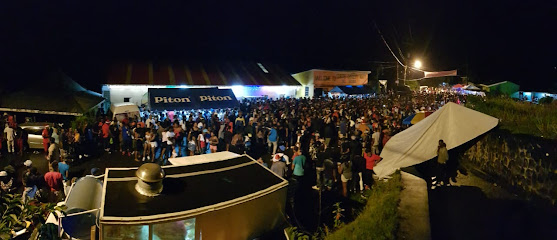
Bigger's Place
Experience the vibrant essence of St. Lucia at Bigger's Place, where refreshing drinks and local flavors come together in a laid-back atmosphere.
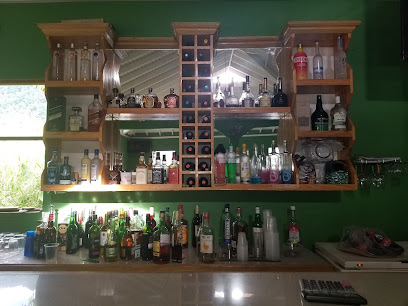
Cheaperz Bar
Discover the vibrant atmosphere of Cheaperz Bar in Palmiste, St. Lucia, where refreshing drinks and local culture intertwine for an unforgettable experience.
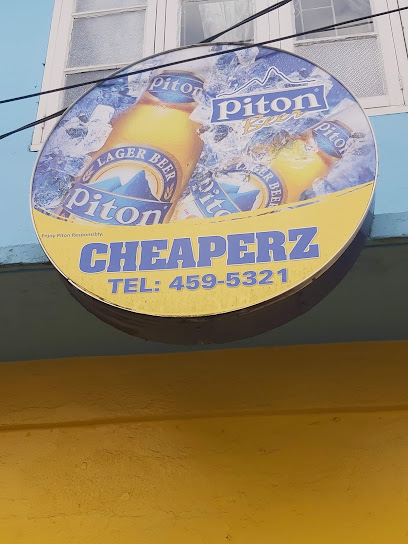
The bamboo Bar
Experience the vibrant nightlife and local flavors at The Bamboo Bar in Belle Vue, a perfect tropical retreat for tourists in St. Lucia.

Acquinas's Bar
Discover Acquinas's Bar in Soufriere, St. Lucia - a vibrant oasis for tourists seeking refreshing drinks and a taste of local culture.
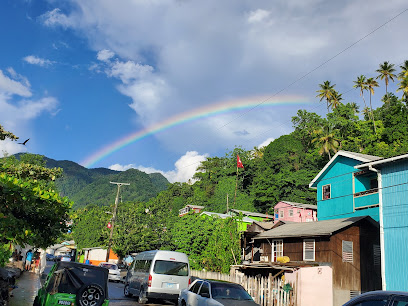
JaLousie Grill
Experience the vibrant flavors of St. Lucia at JaLousie Grill, where local cuisine meets stunning views in an unforgettable atmosphere.
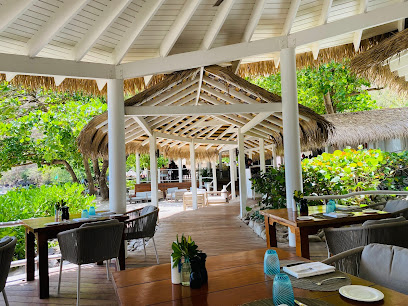
Cane Bar
Experience the Caribbean spirit at Cane Bar in St. Lucia, where exotic cocktails meet stunning views of the Pitons.
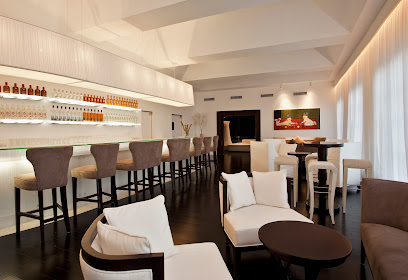
Genesis Entertainment Bar And Grill
Discover the vibrant ambiance and delicious offerings at Genesis Entertainment Bar and Grill in Soufriere, St. Lucia, a must-visit for food and drink lovers.
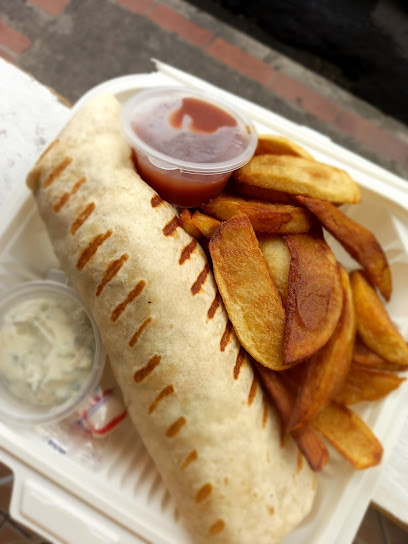
Hush Bar Grill eats & tings
Experience the vibrant flavors of St. Lucia at Hush Bar Grill, where delicious grilled dishes meet a lively atmosphere.
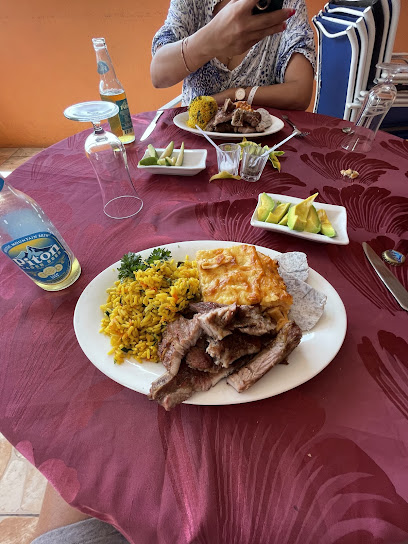
Mari Bar
Discover the Caribbean charm at Mari Bar in Anse Ivrogne, where refreshing drinks and vibrant ambiance await every visitor.
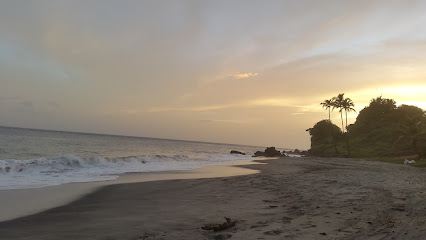
Bonté Restaurant
Experience St. Lucia's vibrant culture at Bonté Restaurant, a lively bar in Belle Vue offering refreshing drinks and local flavors.
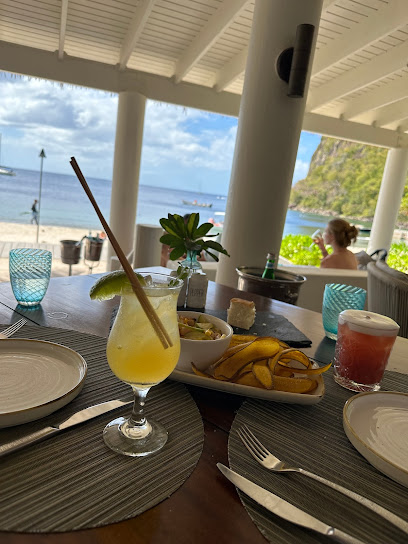
Harmony's Bar
Experience the vibrant atmosphere of Harmony's Bar in Soufriere, St. Lucia, where tropical flavors meet lively culture and breathtaking views.
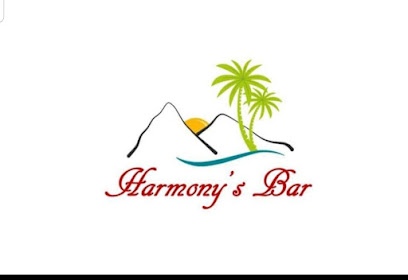
Jwen Se Moun La - Beach Bar
Discover the vibrant atmosphere and tropical flavors at Jwen Se Moun La Beach Bar, a must-visit gem in St. Lucia's coastal paradise.

On The Tiles
Experience the vibrant Caribbean culture at On The Tiles, a premier bar in La Pointe, St. Lucia, offering delightful drinks and a lively atmosphere.

Seaview Disco
Experience the vibrant Caribbean atmosphere at Seaview Disco, where drinks, sports, and stunning views come together in St. Lucia.
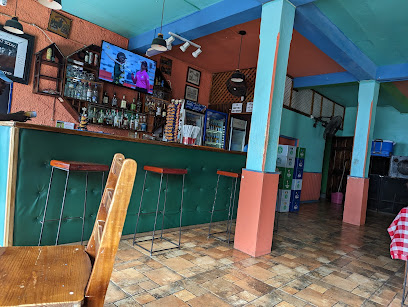
Local Phrases about Jalousie Beach
-
- HelloBonjou
[bon-joo] - GoodbyeOrevwa
[oh-rev-wah] - YesWi
[wee] - NoNon
[nohn] - Please/You're welcomeTanpri
[tahn-pree] - Thank youMèsi
[meh-see] - Excuse me/SorryEskize mwen
[es-kee-zay mwen] - How are you?Kouman ou ye?
[koo-mahn oo yay] - Fine. And you?Byen. E ou menm?
[byen. ay oo mehn] - Do you speak English?Eske ou pale angle?
[es-keh oo pah-lay ang-lay] - I don't understandMwen pa konprann
[mwehn pah kohn-prahn]
- HelloBonjou
-
- I'd like to see the menu, pleaseMwen ta renmen wè meni a, tanpri
[mwehn tah ren-mehn way meh-nee ah, tahn-pree] - I don't eat meatMwen pa manje vyann
[mwehn pah mahn-jay vee-ahn] - Cheers!Santé!
[san-tay] - I would like to pay, pleaseMwen ta renmen peye, tanpri
[mwehn tah ren-mehn pay-yay, tahn-pree]
- I'd like to see the menu, pleaseMwen ta renmen wè meni a, tanpri
-
- Help!Au secours!
[oh seh-koo] - Go away!Alé!
[ah-lay] - Call the Police!Rele polis!
[reh-leh poh-lees] - Call a doctor!Rele yon doktè!
[reh-leh yohn dohk-teh] - I'm lostMwen pedi
[mwehn peh-dee] - I'm illMwen malad
[mwehn mah-lad]
- Help!Au secours!
-
- I'd like to buy...Mwen ta renmen achte...
[mwehn tah ren-mehn asht] - I'm just lookingMwen jis gade
[mwehn zhees gah-day] - How much is it?Konbyen sa koute?
[kohn-byen sah koot] - That's too expensiveSa twò chè
[sah twah sheh] - Can you lower the price?Ou ka ba pri a?
[oo kah bah pree ah]
- I'd like to buy...Mwen ta renmen achte...
-
- What time is it?Ki lè li ye?
[kee lay lee yay] - It's one o'clockLi enpòtan
[lee ahn-poh-tahn] - Half past (10)Mitan (10)
[mee-tahn] - MorningMaten
[mah-tehn] - AfternoonApremidi
[ah-pray-mee-dee] - EveningAswè
[ah-sweh] - YesterdayIè
[yeh] - TodayJodi a
[zho-dee ah] - TomorrowDemen
[deh-mehn] - 11
[uhn] - 22
[de] - 33
[twah] - 44
[kat] - 55
[sank] - 66
[sis] - 77
[set] - 88
[wiyt] - 99
[nèf] - 1010
[dis]
- What time is it?Ki lè li ye?
-
- Where's a/the...?Ki kote yon/la...?
[kee koh-teh yohn/lah] - What's the address?Ki adres la?
[kee ah-dres lah] - Can you show me (on the map)?Ou ka montre mwen (sou kat la)?
[oo kah mohn-tray mwehn (soo kaht lah)] - When's the next (bus)?Ki lè pwochen (bis)?
[kee lay pwosh-ehn bees] - A ticket (to ....)Yon biyè (pou ....)
[yohn byeh (poo)]
- Where's a/the...?Ki kote yon/la...?
History of Jalousie Beach
-
Long before European explorers set foot on Saint Lucia, the island was inhabited by the Arawak and Carib peoples. These indigenous groups thrived along the coasts, including the area now known as Jalousie Beach. They were skilled in fishing, agriculture, and craft-making. The Arawaks were known for their pottery and peaceful ways, whereas the Caribs, who arrived later, were more dominant and warrior-like. These early inhabitants left behind a legacy of cultural artifacts and local names that continue to influence the region today.
-
Jalousie Beach and the surrounding areas became points of interest during the era of European exploration. Christopher Columbus is often credited with the European discovery of Saint Lucia, although it is more likely that Juan de la Cosa, one of his navigators, first noted the island. In the following centuries, Saint Lucia changed hands between the French and the British multiple times, becoming a focal point in the struggle for control over the Caribbean. This period saw the establishment of plantations and the introduction of enslaved Africans, which dramatically altered the island's demographic and cultural landscape.
-
The strategic location of Saint Lucia made it a haven for pirates and privateers during the 17th and 18th centuries. Jalousie Beach, with its hidden coves and sheltered bays, provided the perfect hiding spots for these sea marauders. The stories of pirate treasure and daring sea battles have become an integral part of the folklore and mystique of the area. Even today, the allure of hidden treasures and pirate legends captivates the imaginations of visitors and locals alike.
-
The iconic twin peaks of the Pitons, located near Jalousie Beach, were the backdrop for several naval battles between the French and the British. One of the most significant was the Battle of the Pitons in 1782, a part of the larger conflict known as the American Revolutionary War. The British fleet, under Admiral Rodney, used the Pitons as navigational markers to launch a surprise attack on the French fleet anchored in the bay. This battle was pivotal in securing British control over Saint Lucia for several years.
-
The fertile lands around Jalousie Beach were once part of expansive sugar plantations established by European colonizers. The labor-intensive sugar industry relied heavily on enslaved Africans, who were forcibly brought to the island and endured harsh conditions. The legacy of slavery is deeply ingrained in the history of Saint Lucia, and remnants of plantation life, such as old sugar mills and estate houses, can still be found in the region. The abolition of slavery in 1834 marked a significant turning point, leading to social and economic changes that continue to shape the island's culture.
-
In the 20th century, Jalousie Beach transformed from a quiet, historical locale into a premier tourist destination. The stunning natural beauty of the beach, combined with the dramatic backdrop of the Pitons, attracted visitors from around the world. Luxury resorts and eco-friendly accommodations have been developed, offering a blend of modern amenities and natural serenity. The area has become a symbol of Saint Lucia's commitment to sustainable tourism, balancing economic growth with the preservation of its rich cultural and historical heritage.
Jalousie Beach Essentials
-
Jalousie Beach, also known as Sugar Beach, is located on the southwestern coast of Saint Lucia, nestled between the iconic Pitons. The nearest airport is Hewanorra International Airport (UVF) in Vieux Fort, approximately 45 minutes away by car. Alternatively, George F.L. Charles Airport (SLU) in Castries is about 1.5 hours away. From either airport, you can take a taxi, rent a car, or arrange for a private transfer to reach the beach.
-
While exploring Jalousie Beach and its surroundings, you can use a combination of taxis, rental cars, and water taxis. Taxis are readily available and provide a convenient way to travel, but it's best to agree on a fare before starting your journey. Renting a car offers more flexibility to explore the island at your own pace. Water taxis are a unique and scenic way to travel between beaches and coastal towns. Local buses (minivans) also operate on the island but may not be the most reliable for tourists.
-
The official currency of Saint Lucia is the Eastern Caribbean Dollar (XCD). However, US dollars are widely accepted in tourist areas. Credit and debit cards are accepted at most hotels, restaurants, and larger shops. It's advisable to carry some cash for smaller vendors, tips, and markets. ATMs are available in major towns, but it’s a good idea to withdraw sufficient funds before heading to more remote areas.
-
Jalousie Beach is generally safe for tourists, but it’s important to remain vigilant. Avoid walking alone at night, especially in secluded areas. Be cautious with your belongings, especially on the beach and in crowded places. While most areas around Jalousie Beach are safe, it's advisable to avoid the more isolated neighborhoods of Castries at night due to higher crime rates targeting tourists.
-
In case of an emergency, dial 911 for police, fire, or medical assistance. The nearest hospital to Jalousie Beach is St. Jude Hospital in Vieux Fort. It is recommended to have travel insurance that covers medical emergencies. For minor health issues, there are pharmacies in Soufrière where you can purchase over-the-counter medications. Always carry a copy of your identification and emergency contact information.
-
Fashion: Do wear light, breathable clothing and plenty of sunscreens. Avoid overly revealing swimwear when not on the beach. Religion: Do respect local customs and traditions. When visiting religious sites, dress modestly and remove hats. Public Transport: Do be respectful and patient when using local buses. Don’t expect strict adherence to schedules. Greetings: Do greet locals with a friendly 'hello' or 'good day.' A handshake is common in formal settings. Eating & Drinking: Do try local dishes and drinks, such as fresh seafood and rum punch. Don't refuse hospitality, as it is considered impolite.
-
To experience Jalousie Beach like a local, visit nearby Soufrière, where you can explore the bustling market and sample local cuisine. Engage with locals, who are often friendly and willing to share stories about the island's history and culture. Don’t miss the opportunity to hike the Gros Piton or take a boat tour to see the island from the water. For a unique experience, visit the Sulphur Springs, the world's only drive-in volcano, and enjoy a therapeutic mud bath.
Trending Landmarks in Jalousie Beach
-
Soufrière Drive In Volcano
-
Sugar Beach, a Viceroy Resort
-
Diamond Falls Botanical Gardens & Mineral Baths
-
St Lucia Sulphur Springs
-
Tet Paul Nature Trail
-
Morne Coubaril Historical Adventure Park
-
Piton Falls
-
Gros Piton Nature Trail
-
Rudy John Beach Park
-
Fort Rodney
-
LaTille Falls and Garden
-
Anse Mamin Beach
-
Castries City View Point
-
Constitution Park
-
Moule-à-Chique
Nearby Cities to Jalousie Beach
-
Things To Do in Soufrière
-
Things To Do in Choiseul
-
Things To Do in Canaries
-
Things To Do in Laborie
-
Things To Do in Anse la Raye
-
Things To Do in Marigot Bay
-
Things To Do in Vieux Fort
-
Things To Do in Micoud
-
Things To Do in Praslin
-
Things To Do in Castries
-
Things To Do in Dauphin
-
Things To Do in Rodney Bay
-
Things To Do in Gros Islet
-
Things To Do in Georgetown
-
Things To Do in Chateaubelair






